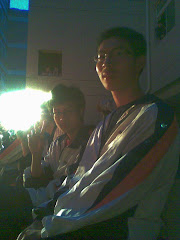Confucius, China's legendary sage, has lost. The advocate of respect, restraint and order is now associated in Nanjingers' minds with one thing--shopping! 
Centered around the ancient Confucius Temple (Fuzi Miao), this neighborhood in southern Nanjing is the place to be on weekends and holidays,especially Spring Festival. Clothing shops and restaurants dominate the main streets (closed to vehicular traffic) while street stalls in the alleyways sell stuffed animals, plants, CDs and even more clothes. The daily night market brings these stalls out onto Gongyuan Street, the main drag between the Confucius Temple and Pingjiang Fu Street, a lively scene even if most of the goods on sale are simple household items. Try the yuanxiao元宵, jelly-filled dumplings whose round shape and sweet taste symbolize happiness and harmony.
Tourists not interested in bringing a cactus back home as reminders of their trip to Nanjing can load up on souvenirs at shops clustered closer to the Confucius Temple complex. In addition to the usual selection of jade goodies, teapots and paintings, vendors display yu hua shi雨花石, multicolored rocks special to Nanjing.
With all the garish consumerism on display outside, it's little wonder that the actual Confucius Temple is the quietest place in the neighborhood. The temple was first constructed in 1034 during the Song Dynasty to complement the Jiangnan Examination School (see below), where the imperial examinations were administered. Scholars came to the temple to pray for success and demonstrate their humble respect for Confucius. Burnt down and rebuilt several times, the current structure dates from after World War Two. Its traditional sweeping eaves give the architecture a Ming and Qing flavor.
Fuzi Miao is perhaps at its best around the time of the Lantern Festival (fifteen days after the Lunar New Year), when a special exhibit of multi-sized and multi-colored lanterns themed around the twelve animals of the lunar cycle lend a festive air to the temple.
If you think that your long, cramped journey was some form of torture, a visit to the Exhibition of the History of the Jiangnan Examination School (Jiangnan Gongyuan江南贡院), should set your mind at ease. Founded in 1168 (the Song Dynasty), the school was used to administer the rigorous civil service exams used to choose officials during China's imperial age.
Founded in 1168 (the Song Dynasty), the school was used to administer the rigorous civil service exams used to choose officials during China's imperial age.
The modern exhibit contains forty examination cells plus a small museum that claims to be the only specialized museum in China dedicated to the imperial examination system. Unfortunately, all the explanations are in Chinese. The exhibit is a short walk east of the Confucius Temple at 1 Jinling Lu.
It was my feelings , just to me like that.However,what is your experiences?~

Centered around the ancient Confucius Temple (Fuzi Miao), this neighborhood in southern Nanjing is the place to be on weekends and holidays,especially Spring Festival. Clothing shops and restaurants dominate the main streets (closed to vehicular traffic) while street stalls in the alleyways sell stuffed animals, plants, CDs and even more clothes. The daily night market brings these stalls out onto Gongyuan Street, the main drag between the Confucius Temple and Pingjiang Fu Street, a lively scene even if most of the goods on sale are simple household items. Try the yuanxiao元宵, jelly-filled dumplings whose round shape and sweet taste symbolize happiness and harmony.
Tourists not interested in bringing a cactus back home as reminders of their trip to Nanjing can load up on souvenirs at shops clustered closer to the Confucius Temple complex. In addition to the usual selection of jade goodies, teapots and paintings, vendors display yu hua shi雨花石, multicolored rocks special to Nanjing.
With all the garish consumerism on display outside, it's little wonder that the actual Confucius Temple is the quietest place in the neighborhood. The temple was first constructed in 1034 during the Song Dynasty to complement the Jiangnan Examination School (see below), where the imperial examinations were administered. Scholars came to the temple to pray for success and demonstrate their humble respect for Confucius. Burnt down and rebuilt several times, the current structure dates from after World War Two. Its traditional sweeping eaves give the architecture a Ming and Qing flavor.

Fuzi Miao is perhaps at its best around the time of the Lantern Festival (fifteen days after the Lunar New Year), when a special exhibit of multi-sized and multi-colored lanterns themed around the twelve animals of the lunar cycle lend a festive air to the temple.
If you think that your long, cramped journey was some form of torture, a visit to the Exhibition of the History of the Jiangnan Examination School (Jiangnan Gongyuan江南贡院), should set your mind at ease.
 Founded in 1168 (the Song Dynasty), the school was used to administer the rigorous civil service exams used to choose officials during China's imperial age.
Founded in 1168 (the Song Dynasty), the school was used to administer the rigorous civil service exams used to choose officials during China's imperial age.
The modern exhibit contains forty examination cells plus a small museum that claims to be the only specialized museum in China dedicated to the imperial examination system. Unfortunately, all the explanations are in Chinese. The exhibit is a short walk east of the Confucius Temple at 1 Jinling Lu.

It was my feelings , just to me like that.However,what is your experiences?~







没有评论:
发表评论